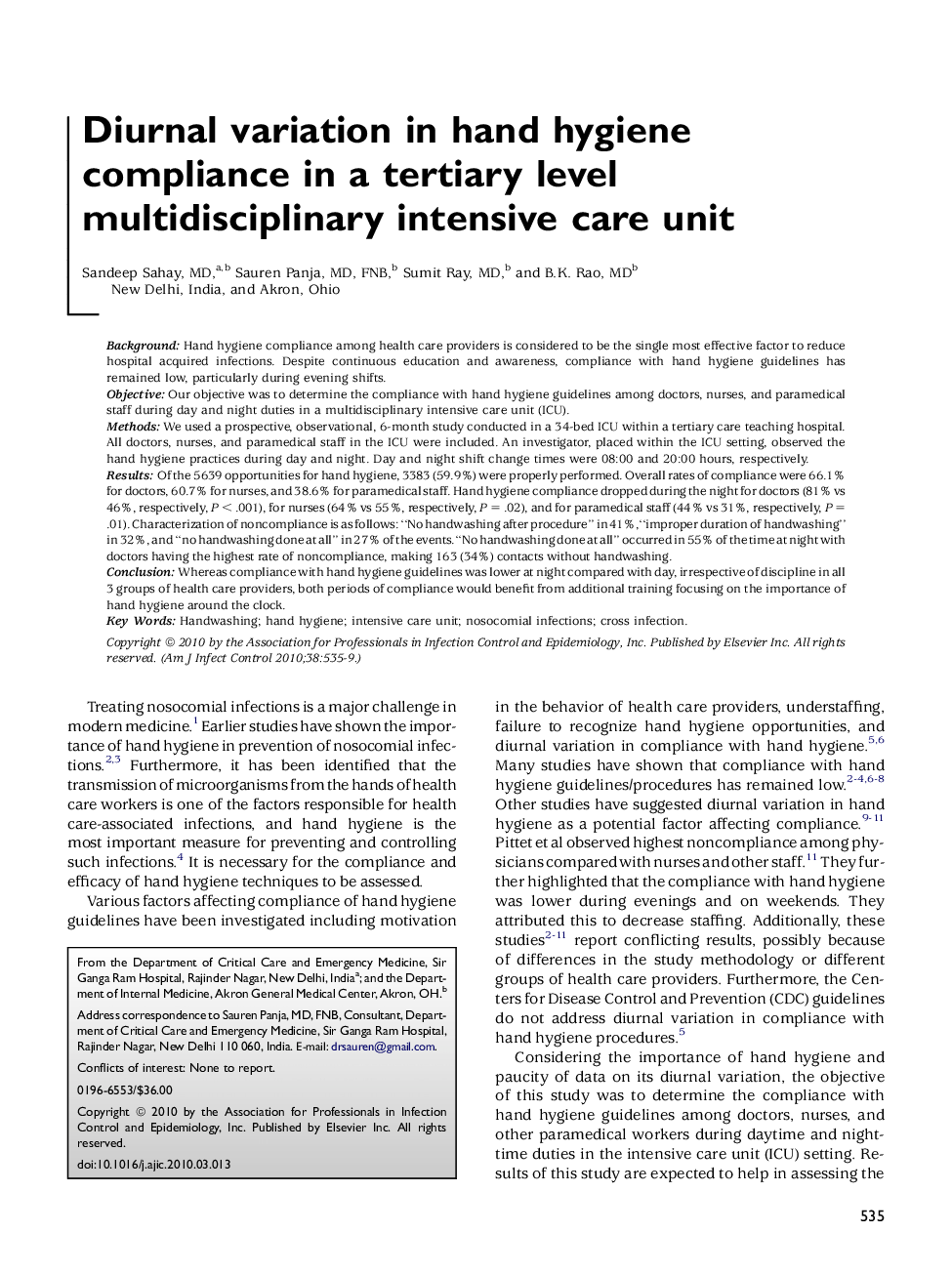| کد مقاله | کد نشریه | سال انتشار | مقاله انگلیسی | نسخه تمام متن |
|---|---|---|---|---|
| 2639414 | 1563532 | 2010 | 5 صفحه PDF | دانلود رایگان |

BackgroundHand hygiene compliance among health care providers is considered to be the single most effective factor to reduce hospital acquired infections. Despite continuous education and awareness, compliance with hand hygiene guidelines has remained low, particularly during evening shifts.ObjectiveOur objective was to determine the compliance with hand hygiene guidelines among doctors, nurses, and paramedical staff during day and night duties in a multidisciplinary intensive care unit (ICU).MethodsWe used a prospective, observational, 6-month study conducted in a 34-bed ICU within a tertiary care teaching hospital. All doctors, nurses, and paramedical staff in the ICU were included. An investigator, placed within the ICU setting, observed the hand hygiene practices during day and night. Day and night shift change times were 08:00 and 20:00 hours, respectively.ResultsOf the 5639 opportunities for hand hygiene, 3383 (59.9%) were properly performed. Overall rates of compliance were 66.1% for doctors, 60.7% for nurses, and 38.6% for paramedical staff. Hand hygiene compliance dropped during the night for doctors (81% vs 46%, respectively, P < .001), for nurses (64% vs 55%, respectively, P = .02), and for paramedical staff (44% vs 31%, respectively, P = .01). Characterization of noncompliance is as follows: “No handwashing after procedure” in 41%, “improper duration of handwashing” in 32%, and “no handwashing done at all” in 27% of the events. “No handwashing done at all” occurred in 55% of the time at night with doctors having the highest rate of noncompliance, making 163 (34%) contacts without handwashing.ConclusionWhereas compliance with hand hygiene guidelines was lower at night compared with day, irrespective of discipline in all 3 groups of health care providers, both periods of compliance would benefit from additional training focusing on the importance of hand hygiene around the clock.
Journal: American Journal of Infection Control - Volume 38, Issue 7, September 2010, Pages 535–539